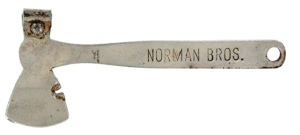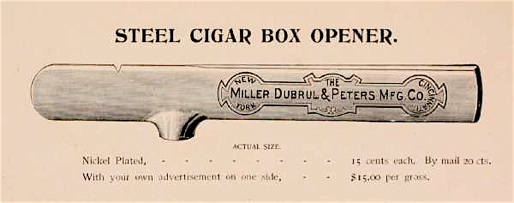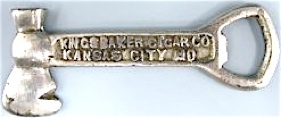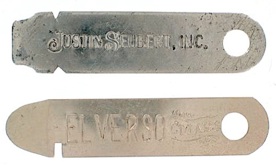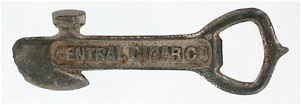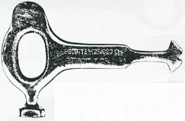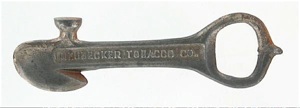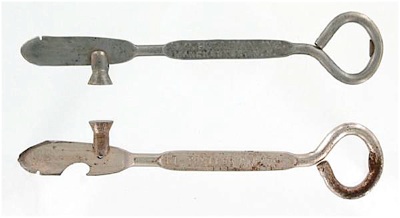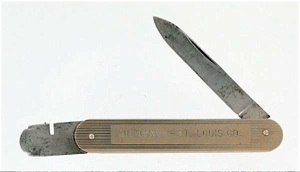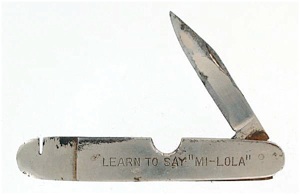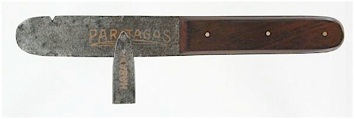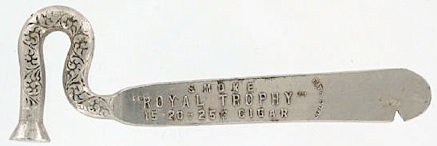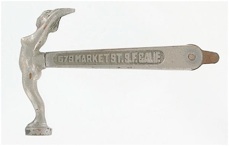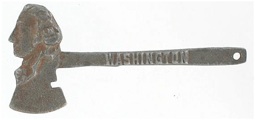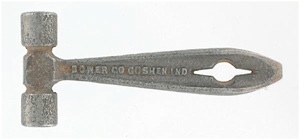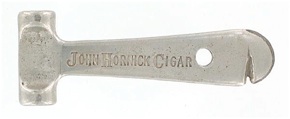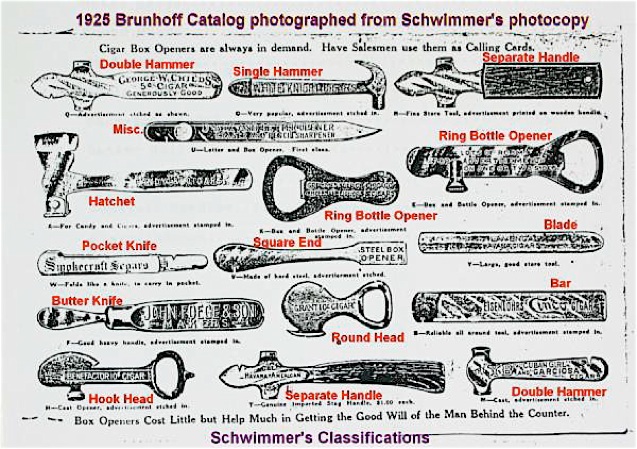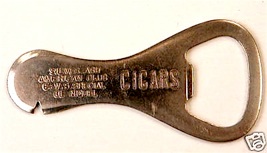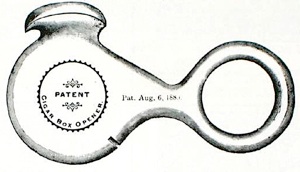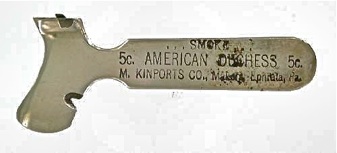Although cigar boxes had been around since the early 1800’s, they were not widely available in consumer sizes. Pre-1860 documents suggest only one cigar in ten was purchased in or from a consumer-size box of 25, 50 or 100. All that changed in 1863 when the need for money to fight the Civil War resulted in a series of tax laws that mandated cigar boxes into universal use. Every cigar after that date had to be packed in and sold from a box. Those Civil War revenue laws required tax stamps to be wrapped around the box, and after 1868, added other labeling and the provision that those stamps must be destroyed when the box was opened. That same year, 1868, the first cigar box opener was patented.
A century later, box-opener collector Mike Schwimmer asked: “Why cigar box openers? Pocket knives, table knives, screw drivers and assorted other household implements were available to do the relatively simple job of opening up a wooden cigar box.” He decided, “Yes, and you can cut your fingernails with a scissors, too, but the proper tool always gets the job done best and faster.”
Cigar box openers were designed to slit the advertising label pasted on the end of the box, irrevocably damage the tax stamp, pry up the nail that sealed the box, and, if desired, pound that nail back in...and to do those tasks quickly and with minimal damage to the box.






